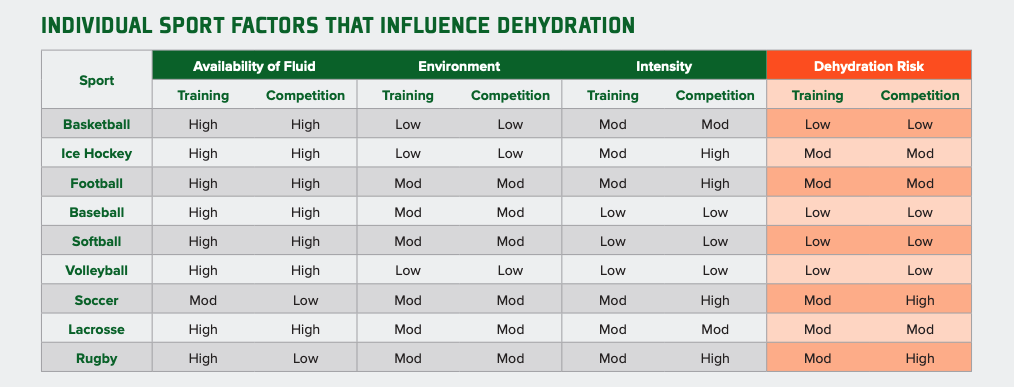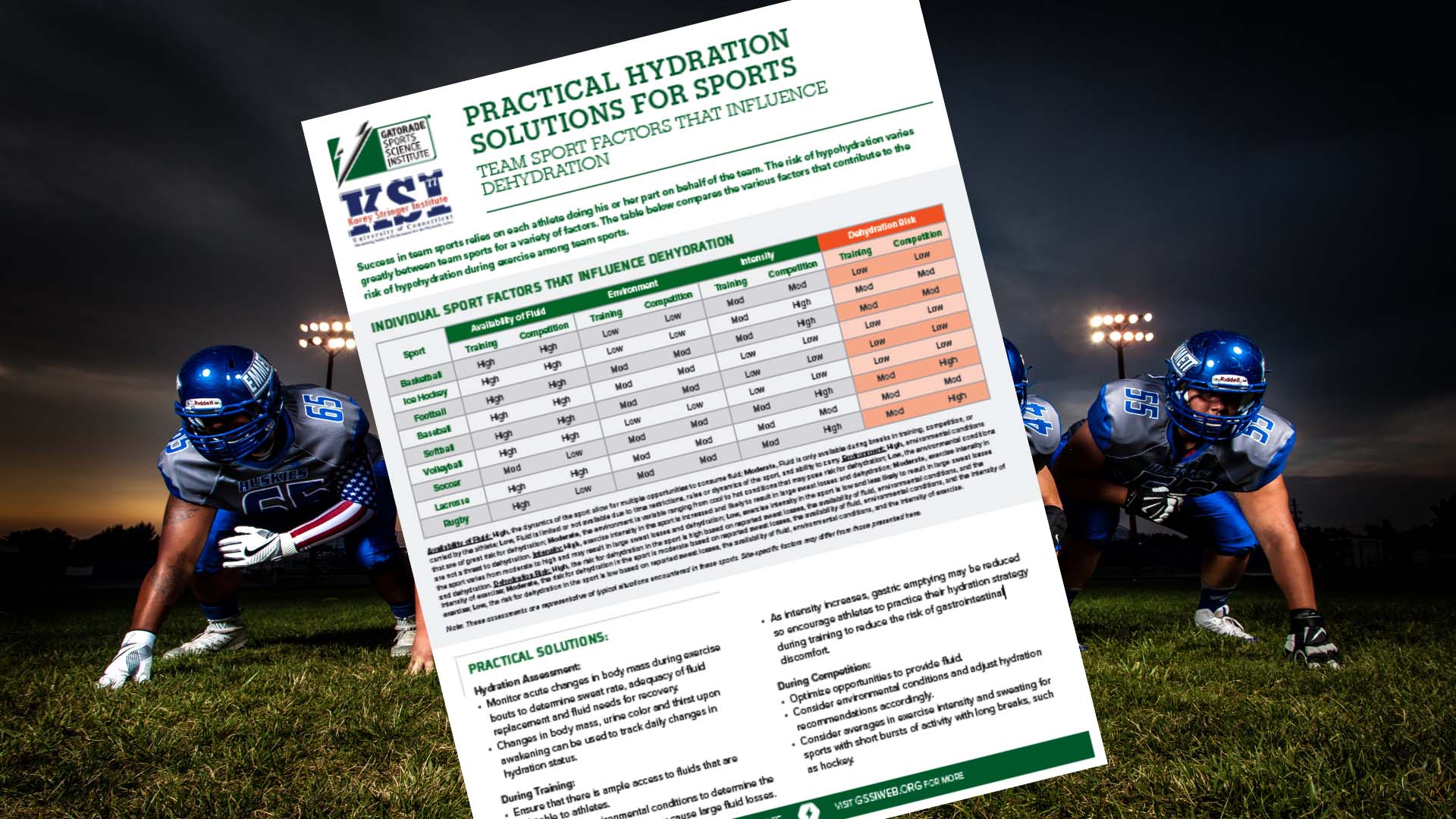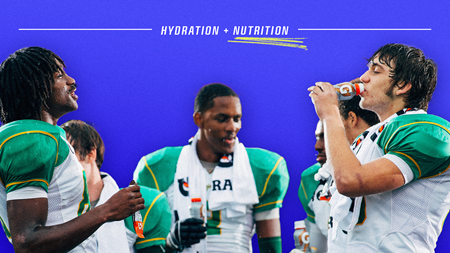Success in team sports relies on each athlete doing his or her part on behalf of the team. The risk of hypohydration varies greatly between team sports for a variety of factors. The table below compares the various factors that contribute to the risk of hypohydration during exercise among team sports.

Individual Sport Factors that Influence Dehydration
Availability of Fluid
- High: Dynamics of the sport allow for multiple opportunities to consume fluid
- Moderate: Fluid is only available during breaks in training, competition, or carried by the athlete
- Low: Fluid is limited or not available due to time restrictions, rules or dynamics of the sport, and ability to carry
Environment
- High: Environmental conditions that are of great risk for dehydration
- Moderate: Environment is variable ranging from cool to hot conditions that may pose risk for dehydration
- Low: Environmental conditions are not a threat to dehydration
Intensity
- High: Exercise intensity in the sport is increased and likely to result in large sweat losses and dehydration
- Moderate: Exercise intensity in the sport varies from moderate to high and may result in large sweat losses and dehydration
- Low: Exercise intensity in the sport is low and less likely to result in large sweat losses and dehydration
Dehydration Risk
- High: Risk for dehydration in the sport is high based on reported sweat losses, the availability of fluid, environmental conditions, and the intensity of exercise
- Moderate: Risk for dehydration in the sport is moderate based on reported sweat losses, the availability of fluid, environmental conditions, and the intensity of exercise
- Low: Risk for dehydration in the sport is low based on reported sweat losses, the availability of fluid, environmental conditions, and the intensity of exercise
Note: These assessments are representative of typical situations encountered in these sports. Site-specific factors may differ from those presented here.
Practical Solutions
Hydration Assessment:
- Monitor acute changes in body mass during exercise bouts to determine sweat rate, adequacy of fluid replacement and fluid needs for recovery.
- Changes in body mass, urine color and thirst upon awakening can be used to track daily changes in hydration status.
During Training:
- Ensure that there is ample access to fluids that are palatable to athletes.
- Measure local environmental conditions to determine the risk of high sweat rates that may cause large fluid losses.
- As intensity increases, gastric emptying may be reduced so encourage athletes to practice their hydration strategy during training to reduce the risk of gastrointestinal discomfort.
Competition:
- Optimize opportunities to provide fluid.
- Consider environmental conditions and adjust hydration recommendations accordingly.
- Consider averages in exercise intensity and sweating for sports with short bursts of activity with long breaks, such as hockey.









